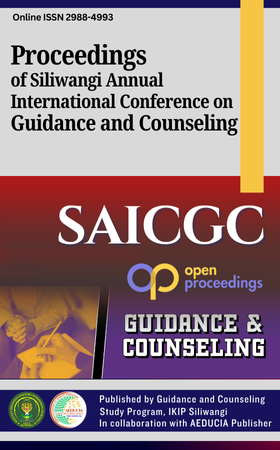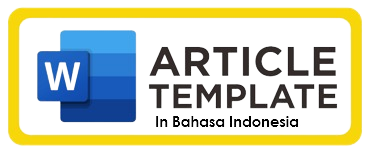Exploring the Interplay of Strengths, Positive Emotions, and Critical Thinking in Counseling Practice
DOI:
https://doi.org/10.64420/saicgc.v3i1.36Keywords:
Strengths; Positive Emotions; Critical Thinking; Counseling PracticeAbstract
This literature review explores the interplay of strengths, positive emotions, and critical thinking within the counseling practice. This literature review used a methodical approach that included a thorough search strategy in order to find and choose peer-reviewed journal articles published within the last ten years that focused on the interaction between strengths, positive emotions,and critical thinking in the counseling practice. Guided by a strengths-based approach, the review investigates how fostering positive emotions, including as appreciation, pleasure, and hope, might assist the discovery and application of client strengths.This review focused on empirical research articles, including quantitative, qualitative, and mixed-methods studies, that specifically examined the interaction between the three core constructs within the counseling context, excluding dissertations, theses, and studies focusing solely on one construct, while employing a systematic data extraction process with inter-rater reliability checks, followed by rigorous thematic analysis of the collected data.The review also explores the critical thinking abilities that are most important for enhancing the effectiveness of strengths-based therapies, including analysis, evaluation, and problem-solving.The review concludes by examining methods for incorporating critical thinking into the counseling process, such as Socratic questioning, reflective exercises, and cooperative goal planning. The results point to a synergistic interaction between critical thinking, positive emotions, and strengths that has a great deal of potential to improve client outcomes. The review does, however, also stress the significance of a well-rounded strategy that recognizes and deals with both happy and negative emotions during the counseling process.
References
Bandura, A. (1977). Self-efficacy: Toward a unifying theory of behavioral change. Psychological Review, 84(2), 191-215.
Beck, J. S. (1976). Cognitive therapy and the emotional disorders. International Universities Press.
CASP (2023). Critical Appraisal Skills Programme. [Website] casp-uk.net
Dweck, C. S. (2006). Mindset: The new psychology of success. Random House.
D'Zurilla, T. J., & Goldfried, M. R. (1971). Problem-solving and behavior modification. Journal of Abnormal Psychology, 78(1), 107-126.
Emmons, R. A., & McCullough, M. E. (2003).The psychology of gratitude. Guilford Press.
Halpern, D. F. (2015). Thought & knowledge: An introduction to critical thinking. Routledge.
Harper, R. A., & Crawford, J. D. (2008). Strengths-based case management: A strengths perspective for human services. Oxford University Press.
Herman, J. L. (1992). Trauma and recovery: The aftermath of violence—from domestic abuse to political terror. Basic Books.
Kernis, M. H. (2017). Toxic positivity: Why ignoring negative emotions harms you and others. Guilford Press.
Lashani, A., Shaeiri, M. K., & Asghari-Moghadam, A. (2012).The effect of gratitude intervention on positive affectivity and optimism. Procedia - Social and Behavioral Sciences, 46, 4421-4426.
Miller, W. R., & Rollnick, S. (2012). Motivational interviewing: Helping people change. Guilford Press.
Rapp, C. A., & Goscha, R. C. (2006). Strengths-based case management: A helping approach for people with disabilities. Guilford Press.
Rash, J. S., Matsuba, M. E., & Prkachin, K. M. (2011).Gratitude and well-being: Effects of a gratitude intervention on psychological well-being. Journal of Happiness Studies, 12(2), 293-305.
Rogers, C. R. (1951). Client-centered therapy: Its current practice, implications, and theory. Houghton Mifflin.
Seligman, M. E. P., & Csikszentmihalyi, M. (2000). Positive psychology: An introduction. American Psychologist, 55(1), 5-14.
Sheldon, K. M., & Elliot, A. J. (2002). Goal setting, planning, and self-regulation: A stage model. Current Directions in Psychological Science, 11(1), 187-191.
Downloads
Published
How to Cite
Issue
Section
License
Copyright (c) 2025 Tuti Alawiyah1

This work is licensed under a Creative Commons Attribution-ShareAlike 4.0 International License.
Authors who publish with this journal agree to the following terms: (1) Authors retain copyright and grant the journal right of first publication with the work simultaneously licensed under a Creative Commons Attribution-ShareAlike 4.0 International. that allows others to share the work with an acknowledgement of the work's authorship and initial publication in this journal; (2) Authors are able to enter into separate, additional contractual arrangements for the non-exclusive distribution of the journal's published version of the work (e.g., post it to an institutional repository or publish it in a book), with an acknowledgement of its initial publication in this journal; (3) Authors are permitted and encouraged to post their work online (e.g., in institutional repositories or on their website) prior to and during the submission process, as it can lead to productive exchanges, as well as earlier and greater citation of published work.




















